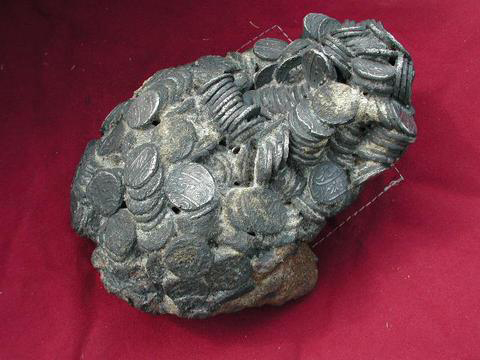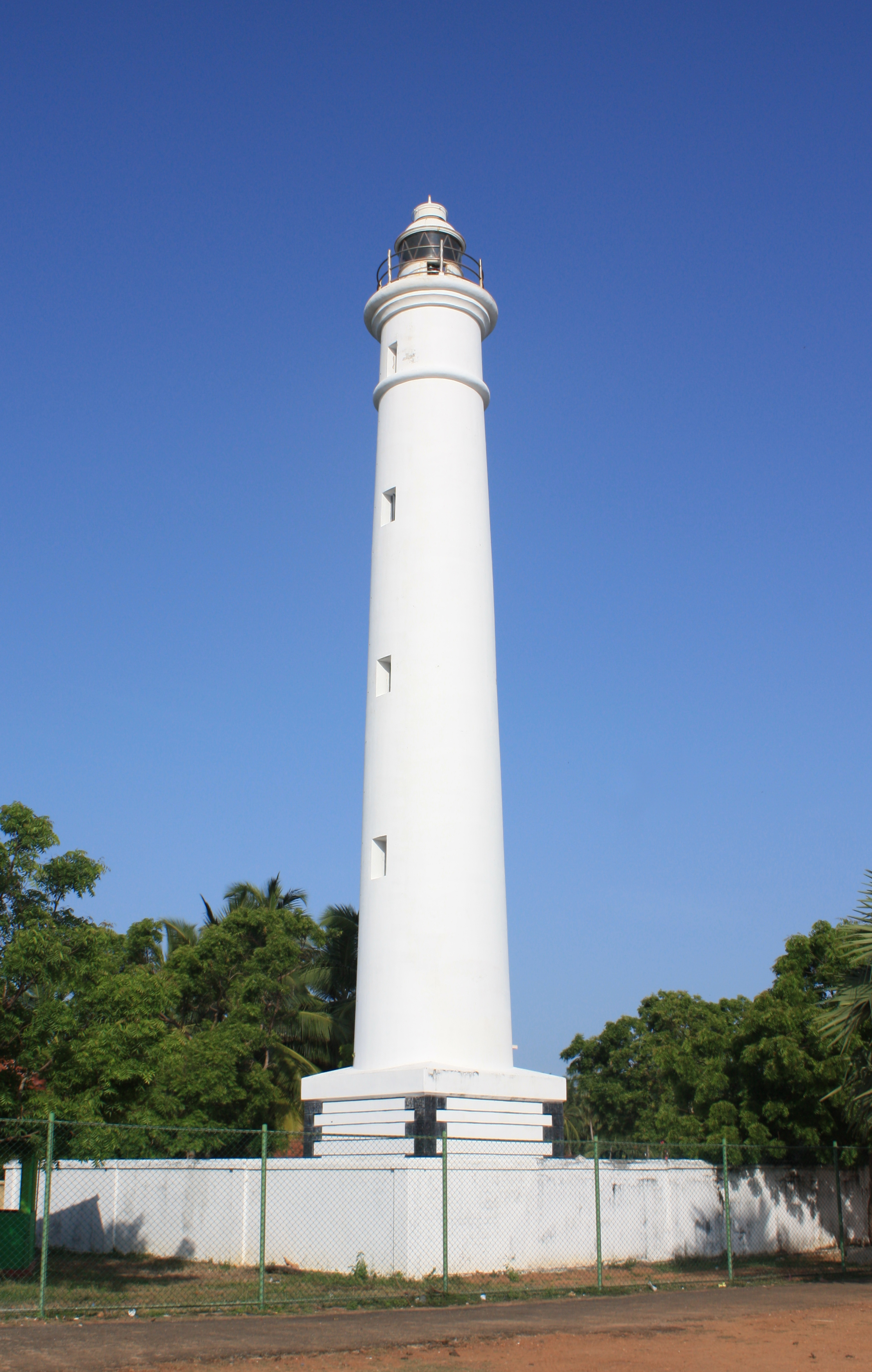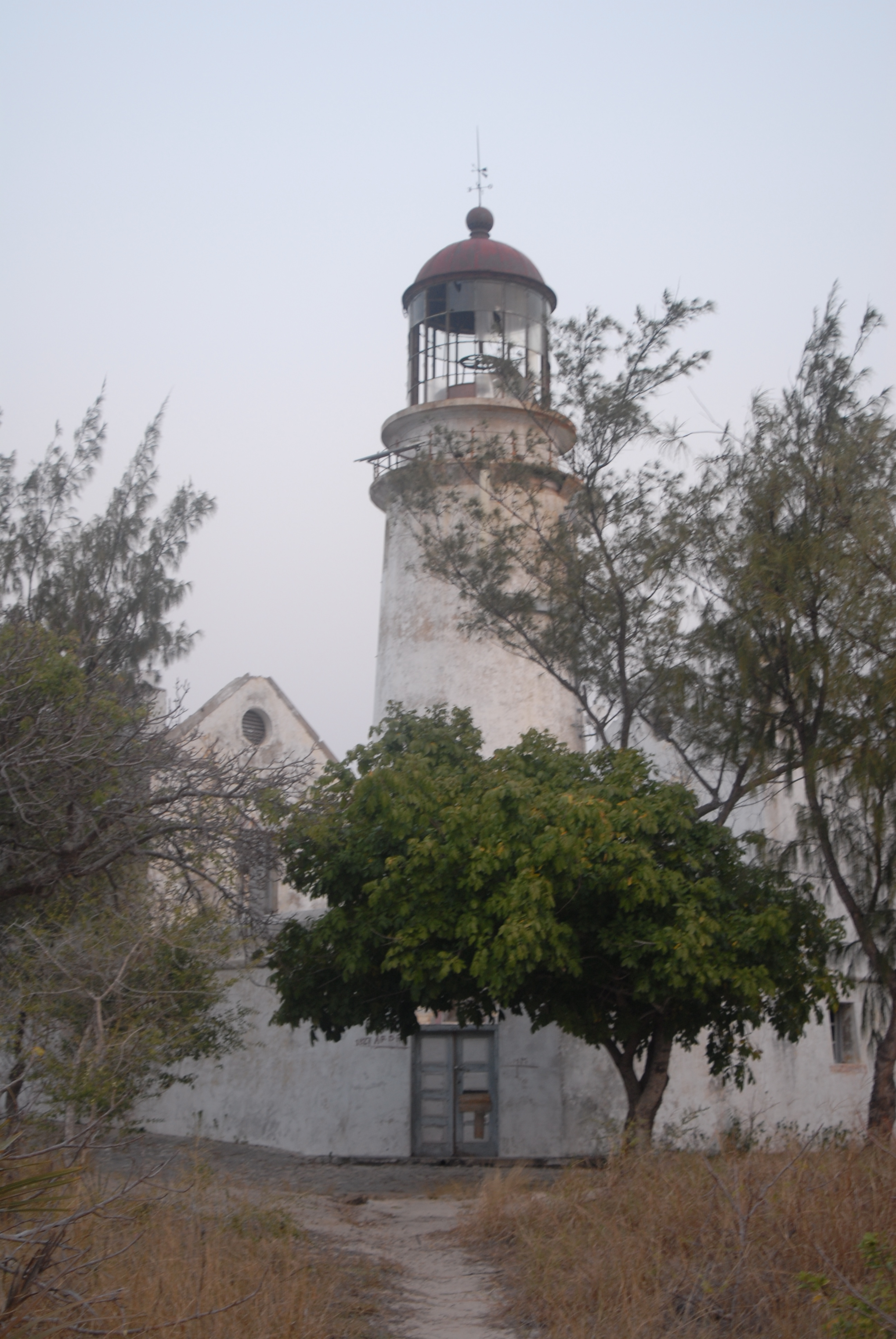|
Great Basses Reef Lighthouse
Great Basses Reef Lighthouse is an offshore lighthouse in the south of Sri Lanka, operated and maintained by the Sri Lanka Ports Authority. It is located on a reef 13 km off the coast of Yala National Park, near Little Basses Reef Lighthouse. It is accessible only by boat. The two Basses lighthouses, 'Great' and 'Little', are among the most famous offshore lighthouses of Asia. History The necessity of a lighthouse was acknowledged in 1856, a design of an iron tower on a granite base was suggested and costs began to be incurred with no results. A new design of the lighthouse by Alexander Gordon and James Nicholas Douglass was put forward in 1867 and approved. The executive engineer in charge was William Douglass, brother of James (later Sir James). Two steam vessels were used, each capable of carrying 120 tonnes of stone and each equipped with lifting gear, as each block weighs 2 to 3 tons. The first stone was laid in December 1870, the last in late 1872 and the light was ... [...More Info...] [...Related Items...] OR: [Wikipedia] [Google] [Baidu] |
Sri Lanka
Sri Lanka (, ; si, ශ්රී ලංකා, Śrī Laṅkā, translit-std=ISO (); ta, இலங்கை, Ilaṅkai, translit-std=ISO ()), formerly known as Ceylon and officially the Democratic Socialist Republic of Sri Lanka, is an island country in South Asia. It lies in the Indian Ocean, southwest of the Bay of Bengal, and southeast of the Arabian Sea; it is separated from the Indian subcontinent by the Gulf of Mannar and the Palk Strait. Sri Lanka shares a maritime border with India and Maldives. Sri Jayawardenepura Kotte is its legislative capital, and Colombo is its largest city and financial centre. Sri Lanka has a population of around 22 million (2020) and is a multinational state, home to diverse cultures, languages, and ethnicities. The Sinhalese are the majority of the nation's population. The Tamils, who are a large minority group, have also played an influential role in the island's history. Other long established groups include the Moors, the Burghers ... [...More Info...] [...Related Items...] OR: [Wikipedia] [Google] [Baidu] |
Great Basses Wreck
The Great Basses wreck is an early 18th-century shipwreck on Great Basses Reef, about 12 km off the south coast of Sri Lanka, discovered by Arthur C. Clarke and Mike Wilson in 1961. The ship, ultimately identified as belonging to the Mughal Emperor Aurangzeb, yielded fused bags of silver rupee Rupee is the common name for the currencies of India, Mauritius, Nepal, Pakistan, Seychelles, and Sri Lanka, and of former currencies of Afghanistan, Bahrain, Kuwait, Oman, the United Arab Emirates (as the Gulf rupee), British East Africa, B ...s, cannons, and other artifacts. The discovery was carefully documented and became the basis for Clarke's 1964 book ''The Treasure of the Great Reef''.McAleer, Neil. ''Arthur C. Clarke: The Authorized Biography'', Contemporary Books, Chicago, 1992. A clump of rupees from the wreck was featured on the History Channel series '' Pawn Stars'' in the episode " Shocking Chum" (this segment was shown again in " Greatest Gambles"). Reference ... [...More Info...] [...Related Items...] OR: [Wikipedia] [Google] [Baidu] |
List Of Lighthouses In Sri Lanka
This is a list of lighthouses in Sri Lanka. There are 14 active lighthouses in Sri Lanka. Most of the lighthouses in Sri Lanka are operated and maintained by the Sri Lanka Ports Authority (SLPA). However several are operated by the Sri Lanka Navy, while some are inactive. Retrieved 14 November 2016 History Most of the lighthouses in Sri Lanka were built during the rule of the country (then known as Ceylon). These were operated and maintained by the |
Chance Brothers
Chance Brothers and Company was a glassworks originally based in Spon Lane, Smethwick, West Midlands (formerly in Staffordshire), in England. It was a leading glass manufacturer and a pioneer of British glassmaking technology. The Chance family originated in Bromsgrove in Worcestershire as farmers and craftsmen, before setting up business in Smethwick in 1822. Situated between Birmingham and the Black Country in the agglomeration of the Midlands industrial heartland, they took advantage of the skilled workers, canals and many advances that were taking place in the industrial West Midlands at the time. Throughout its almost two centuries of history many changes affected the company which, now privatised, continues to function as Chance Glass Limited, a specialised industrial glass manufacturer in Malvern, Worcestershire at one of its small subsidiary factories. The social and economic impact of the company on the region is the subject of a project sponsored by the Heritage Lo ... [...More Info...] [...Related Items...] OR: [Wikipedia] [Google] [Baidu] |
Hyperradiant Fresnel Lens
Hyper-radial or hyperradiant Fresnel lenses are Fresnel lenses used in lighthouses. They are larger than "first-order" lenses, having a focal length (radius) of 1330 mm (52.36 inches). The idea was mentioned by Thomas Stevenson in 1869 and first proposed by John Richardson Wigham in 1872, and again proposed by Thomas Stevenson in 1885 (infringing Wigham's patent). The hyper-radial lens was made in 1885 by the F. Barbier Company in Paris as a test lens for the lighthouse illumination trials then going on at the South Foreland Lighthouse in the United Kingdom (UK). Chance Brothers Glass Company made their first hyper-radial lens in 1887 in the UK. These lenses were originally named biform, and later triform and quadriform lenses, by Wigham. Thomas Stevenson used the term hyperradiant lens, and later they were renamed the hyper-radial lens by James Kenward of the Chance Brothers Glass Company. The hyper-radial Fresnel lenses were the largest ever put into use and were installe ... [...More Info...] [...Related Items...] OR: [Wikipedia] [Google] [Baidu] |
Arthur C
Arthur is a common male given name of Brythonic origin. Its popularity derives from it being the name of the legendary hero King Arthur. The etymology is disputed. It may derive from the Celtic ''Artos'' meaning “Bear”. Another theory, more widely believed, is that the name is derived from the Roman clan '' Artorius'' who lived in Roman Britain for centuries. A common spelling variant used in many Slavic, Romance, and Germanic languages is Artur. In Spanish and Italian it is Arturo. Etymology The earliest datable attestation of the name Arthur is in the early 9th century Welsh-Latin text ''Historia Brittonum'', where it refers to a circa 5th to 6th-century Briton general who fought against the invading Saxons, and who later gave rise to the famous King Arthur of medieval legend and literature. A possible earlier mention of the same man is to be found in the epic Welsh poem ''Y Gododdin'' by Aneirin, which some scholars assign to the late 6th century, though this is still a ... [...More Info...] [...Related Items...] OR: [Wikipedia] [Google] [Baidu] |
Rupee
Rupee is the common name for the currencies of India, Mauritius, Nepal, Pakistan, Seychelles, and Sri Lanka, and of former currencies of Afghanistan, Bahrain, Kuwait, Oman, the United Arab Emirates (as the Gulf rupee), British East Africa, Burma, German East Africa (as Rupie/Rupien), and Tibet. In Indonesia and the Maldives, the unit of currency is known as ''rupiah'' and ''rufiyaa'' respectively, cognates of the word rupee. The Indian rupees () and Pakistani rupees () are subdivided into one hundred paise (singular ''paisa'') or pice. The Nepalese rupee (रू) subdivides into one hundred paisa (singular and plural) or four sukaas. The Mauritian, Seychellois, and Sri Lankan rupees subdivide into 100 cents. Etymology The Hindustani word ''rupyā'' is derived from the Sanskrit word ''rūpya'' (), which means "wrought silver, a coin of silver", in origin an adjective meaning "shapely", with a more specific meaning of "stamped, impressed", whence "coin". It is derived f ... [...More Info...] [...Related Items...] OR: [Wikipedia] [Google] [Baidu] |
Treasure
Treasure (from la, thesaurus from Greek language ''thēsauros'', "treasure store") is a concentration of wealth — often originating from ancient history — that is considered lost and/or forgotten until rediscovered. Some jurisdictions legally define what constitutes treasure, such as in the British Treasure Act 1996. The phrase "blood and treasure" has been used to refer to the human and monetary costs associated with massive endeavours such as war that expend both. Searching for hidden treasure is a common theme in legend; treasure hunters do exist, and can seek lost wealth for a living. Burial Buried treasure is an important part of the popular mythos surrounding pirates. According to popular conception, pirates often buried their stolen fortunes in remote places, intending to return for them later (often with the use of treasure maps). There are three well-known stories that helped popularize the myth of buried pirate treasure: "The Gold-Bug" by Edgar Allan Poe, ... [...More Info...] [...Related Items...] OR: [Wikipedia] [Google] [Baidu] |
Northern Lighthouse Board
The Northern Lighthouse Board (NLB) is the general lighthouse authority for Scotland and the Isle of Man. It is a non-departmental public body responsible for marine navigation aids around coastal areas. History The NLB was formed by Act of Parliament in 1786 as the Commissioners of Northern Light Houses, largely at the urging of the lawyer and politician George Dempster ("Honest George"), to oversee the construction and operation of four Scottish lighthouses: Kinnaird Head, North Ronaldsay, Scalpay and Mull of Kintyre, for which they were empowered to borrow up to £1,200. Until then, the only major lighthouse in Scotland was the coal brazier mounted on the Isle of May in the Firth of Forth, together with some smaller lights in the Firths of the Tay and Clyde. None of the major passages around Scotland, which led through dangerous narrows, were marked. The commissioners, whose first president was the Lord Provost of Edinburgh, Sir James Hunter-Blair, advertised for buildin ... [...More Info...] [...Related Items...] OR: [Wikipedia] [Google] [Baidu] |
Lighthouse
A lighthouse is a tower, building, or other type of physical structure designed to emit light from a system of lamps and lenses and to serve as a beacon for navigational aid, for maritime pilots at sea or on inland waterways. Lighthouses mark dangerous coastlines, hazardous shoals, reefs, rocks, and safe entries to harbors; they also assist in aerial navigation. Once widely used, the number of operational lighthouses has declined due to the expense of maintenance and has become uneconomical since the advent of much cheaper, more sophisticated and effective electronic navigational systems. History Ancient lighthouses Before the development of clearly defined ports, mariners were guided by fires built on hilltops. Since elevating the fire would improve the visibility, placing the fire on a platform became a practice that led to the development of the lighthouse. In antiquity, the lighthouse functioned more as an entrance marker to ports than as a warning signal for reefs a ... [...More Info...] [...Related Items...] OR: [Wikipedia] [Google] [Baidu] |
2004 Indian Ocean Earthquake And Tsunami
An earthquake and a tsunami, known as the Boxing Day Tsunami and, by the scientific community, the Sumatra–Andaman earthquake, occurred at 07:58:53 local time (UTC+7) on 26 December 2004, with an epicentre off the west coast of northern Sumatra, Indonesia. It was an undersea megathrust earthquake that registered a magnitude of 9.1–9.3 , reaching a Mercalli intensity up to IX in certain areas. The earthquake was caused by a rupture along the fault between the Burma Plate and the Indian Plate. A series of massive tsunami waves grew up to high once heading inland, after being created by the underwater seismic activity offshore. Communities along the surrounding coasts of the Indian Ocean were devastated, and the tsunamis killed an estimated 227,898 people in 14 countries, making it one of the deadliest natural disasters in recorded history. The direct results caused major disruptions to living conditions and commerce in coastal provinces of surrounded countries, including Ac ... [...More Info...] [...Related Items...] OR: [Wikipedia] [Google] [Baidu] |
Trinity House
"Three In One" , formation = , founding_location = Deptford, London, England , status = Royal Charter corporation and registered charity , purpose = Maintenance of lighthouses, buoys and beacons , headquarters = Trinity House, Tower Hill, London, England , region = , membership = , leader_title = Master , leader_name = Anne, Princess Royal , leader_title2 = Deputy Master , leader_name2 = Captain Ian McNaught , revenue = £38,405,000 (2020) , expenses = £46,801,000 (2020) , staff = 312 (2020) , website trinityhouse.co.uk The Corporation of Trinity House of Deptford Strond, also known as Trinity House (and formally as The Master, Wardens and Assistants of the Guild Fraternity or Brotherhood of the most glorious and undivided Trinity and of St Clement in the Parish of Deptford Strond in the County of Kent), is the offi ... [...More Info...] [...Related Items...] OR: [Wikipedia] [Google] [Baidu] |







